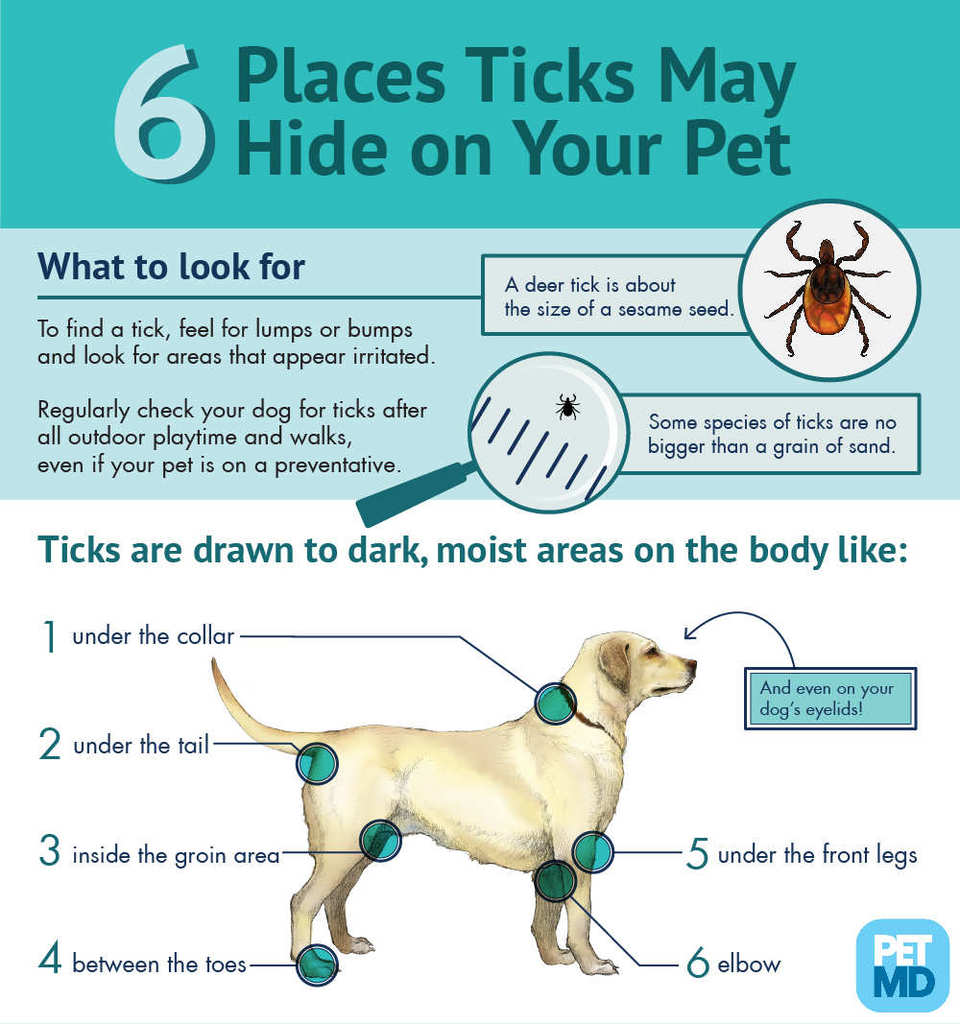
Reviewed & Fact-Checked by
Dr. Chyrle Bonk
Veterinarian (DVM)
Learn more about our Veterinary Review Board »
A single tick bite can have debilitating consequences. This article covers the diagnosis, treatment, and prevention of Lyme disease in dogs along with a guide to tick removal.
What Is Lyme Disease?
Named after an outbreak of a then completely mysterious disease in Lyme, Connecticut in 1975, Lyme Disease is a tick-borne illness that can affect both humans as well as dogs, horses, cattle and various wildlife.
Lyme disease has a higher incidence in the United States in the Northeast, and Midwest. It is also found in parts of Canada, Asia and Europe.
The disease is caused by a type of bacterium called Borrelia burgdorferi that live in certain kind of ticks. When an infected tick bites a dog, the bacterium enters the bloodstream and can spread rapidly to a number of different areas of the body.
Lyme disease can cause, long term and debilitating problems that can significantly impact a dog's overall health and well-being.
Did you know that not all the species of ticks feed 365 days a year but there are different species that are active all 12 months of the year?

Lyme Disease infected tick arachnid insect on a dog
Are Certain Dog Breeds More at Risk for Lyme Disease?
As mentioned, Lyme Disease is caused by the bite of an infected tick. This means that any dog could fall victim, unless perhaps they spent their lives inside in the presence of no other animals.
There are certain risk factors though.
One of the biggest is where you and your dog live.
The majority of Lyme disease cases diagnosed every year in humans and dogs occur in the Northeast, the Upper Midwest and along the Pacific Coast.
In recent years however, thanks to things like deforestation and changing climate patterns Lyme disease is now being found in places it never has been before.
The ticks that carry Lyme disease are more commonly the deer tick, or black-legged tick. Many thrive in long grasses or wooded areas.
Ticks can't fly, so to bite they must come in contact with a dog. This is why so many people and dogs diagnosed with Lyme disease are those who like to go for long walks in the 'countryside' and encounter lots of long grasses and dense bushes.
If your dog is a longer haired breed, they may be at greater risk because it will be harder for you to spot that a tick has latched on to them. That is the other problem with these ticks. They don't just bite and fly away, they have to latch on to their victims and in order to feed.
How to Tell if Your Dog has Lyme Disease?
In some cases pet parents may not know that their dog was bitten by a tick at all. In this case, some tell-tale symptoms of possible Lyme disease include:
- Loss of appetite
- Lethargy
- Joint swelling
- Apparent lameness that may come and go and move from leg to leg
- Fever
Signs may show up within a couple of days of the tick bite or can take up to a year to show.
Often dog owners just notice that their dog seems off and can't really pinpoint specific signs.
These can also be symptoms of other diseases, so the first thing you should do is take your dog to the vet as soon as possible. If you know that your dog has suffered a recent tick bite they should visit their vet as a precaution anyway, even if they seem just fine.
How To Remove a Tick From your Dog
This useful infographic from WebMD shows you where ticks hide which is useful to know when inspecting your dog.

Preventing Lyme Disease in dogs (Source: WebMD)
Not all ticks carry the Lyme disease bacterium, some just bite and cause pain. However, there is no way to tell the difference between a Lyme disease carrying ticks and a more benign one.
Therefore, if your dog is bitten by a tick prompt removal is a must. You can't just pull the tick off though; it needs to be removed carefully with tweezers, making sure to get the head.
You should keep the tick once you remove it and place it in an airtight container - a simple Ziploc baggie is fine - so that your vet can test it at a later date.
How Is Lyme Disease Diagnosed?
Vets obtain a definitive diagnosis of Lyme disease via a series of urine or blood tests. These tests, known as C6 tests, are designed to detect antibodies against a protein called “C6”.
If they are present that indicates an active Lyme disease infection. Further testing then determines if the dog needs more extensive treatment.
It can be three to five weeks after a dog is bitten before the C6 antibodies show up in the bloodstream.
If you have the tick that bit your dog however that can be tested more quickly to determine if it was a threat or not and help speed diagnosis and possible treatment.
How is Lyme Disease in Dogs Treated?
A course of antibiotics, usually doxycycline or amoxicillin, is needed for at least 30 days.
Occasionally dogs may need other supportive treatments as well, such as anti-inflammatories or fluids to make them more comfortable.
Secondary treatments may be called for to address problems that have arisen as a result of the infection, and damage to joints or organs.
Recovery and Prevention in Dogs with Lyme Disease
How long it takes for a dog to recover from Lyme disease is very much an individual thing. It will depend on a number of different factors and your vet will be your best guide when it comes to helping ensure your dog recovers as quickly and fully as possible.
Dr. Chyrle Bonk, DVM at Clearwater Valley Veterinary Clinic in Orofino, ID states that:
One of the many reasons for keeping your dogs on a good flea and tick preventative is Lyme disease. This disease is passed through the bite of an infected tick and can cause problems in many areas of the body. Not only is Lyme disease an issue for dogs, it can also similarly affect people, especially those living in the Northeast of the United States.
In terms of prevention there are a number of things you can do. There is now, in fact, a Lyme disease vaccination available, but it is not suitable for all dogs and, like the flu vaccine, may not be 100% effective.
Aside from the Lyme vaccine, using a flea and tick preventative is your best option for preventing tick bites. Don't delay, you cannot even be a week late on giving your dog his next flea and tick treatment!
There are some practical things you can do as well, especially if you're usually hiking, backpacking or camping with your dog. Those include:
- Avoid walking in long grasses and try to stay 'on the beaten path' as much as possible.
- Inspect your dog - and yourself - for ticks - after every walk
- If you find a tick, remove it promptly and make an appointment with a vet (or a doctor if a tick bit you) Lyme disease is not a communicable infection - you can't catch it from your dog and vice versa - but if one of you has been bitten the chances are good that the other one may have been as well.
- Talk to your vet about the right tick repellent product for your dog and how often you should use it.
Take note: Everyday inspection and the use of topical parasiticides are super important for your dog.
Topical flea treatments like Frontline Plus or K9 Advantix are good over-the-counter options. The regular Frontline, without “plus” in the name, does not give any protection against ticks… JUST fleas.
However you shouldn’t rely solely on these products since fleas are becoming increasingly resistant to topical flea and tick treatments. Sentinel Spectrum and Simparica are both oral flea and tick preventative that require a prescription and are both-vet recommended flea medications for dogs.
Before you begin any kind of treatment, it’s important to consult with your vet to ensure your dog is a suitable candidate for these treatments and that you know how to safely use them.
The good news is that a great deal of research is currently ongoing into Lyme disease and how it can be better treated in dogs and in humans.
Until more is known, however, the best thing you can do for your dog and yourself - is remain vigilant when outdoors and consider avoiding areas known to be a "hot-bed" for Lyme disease infected ticks.




